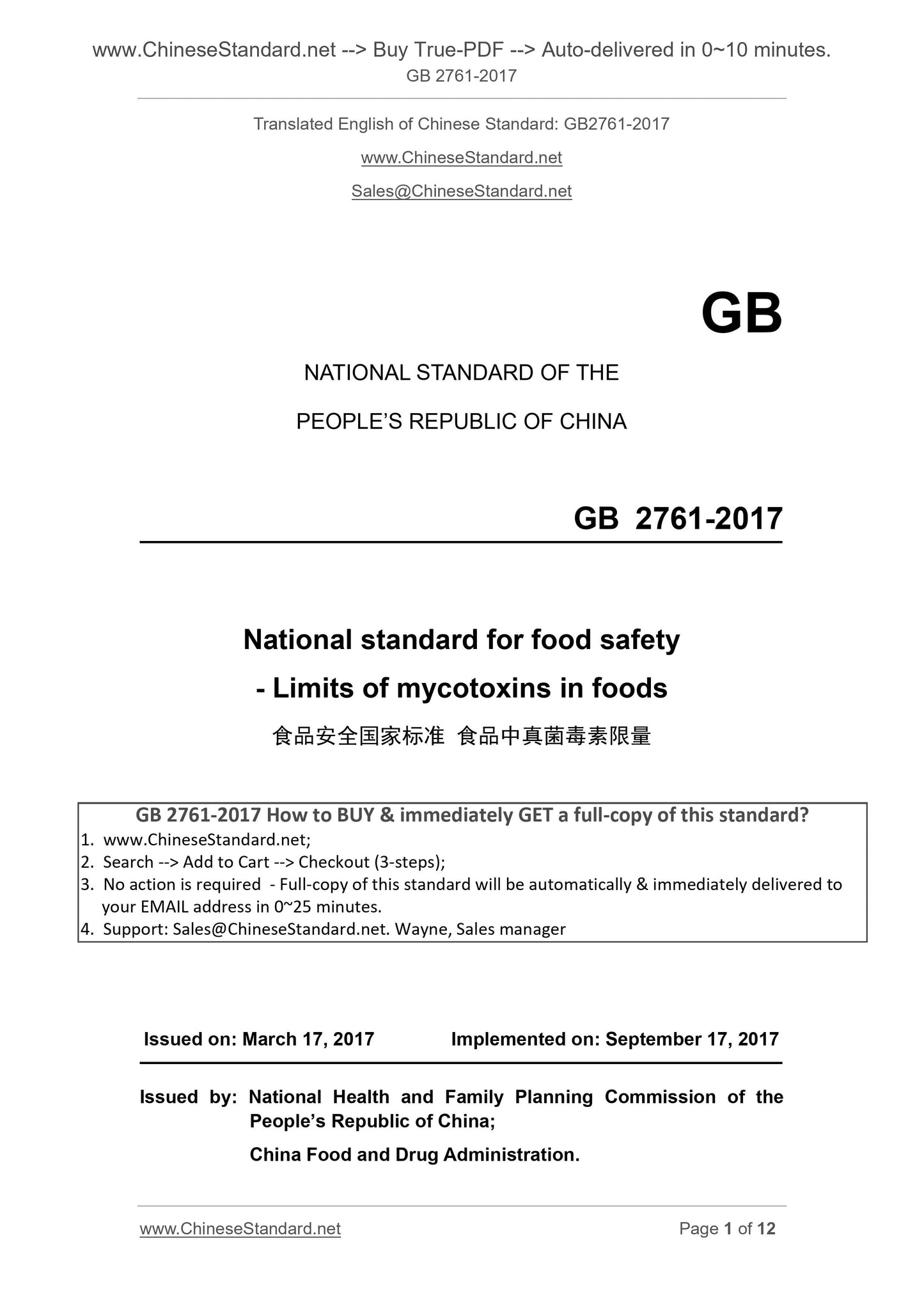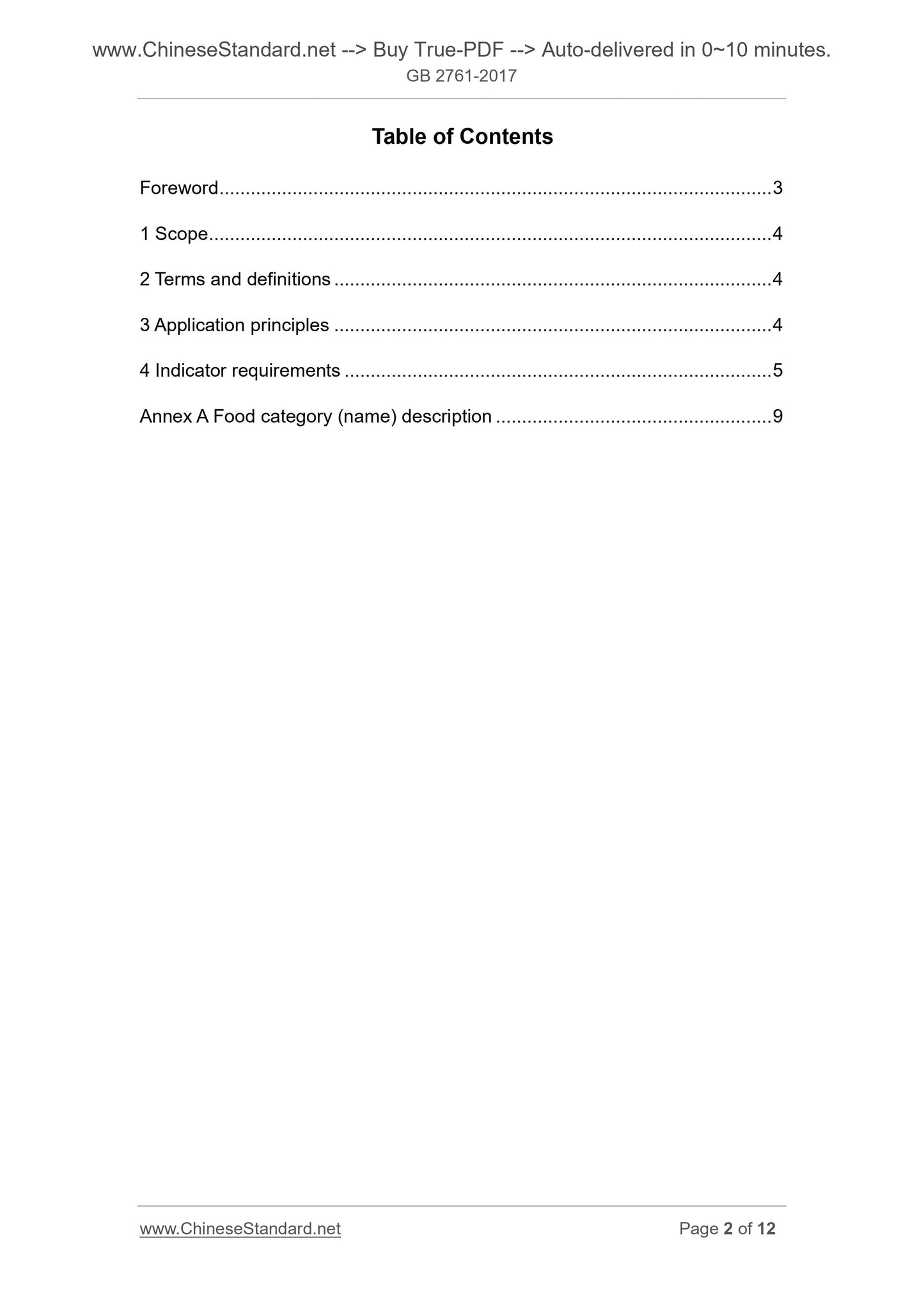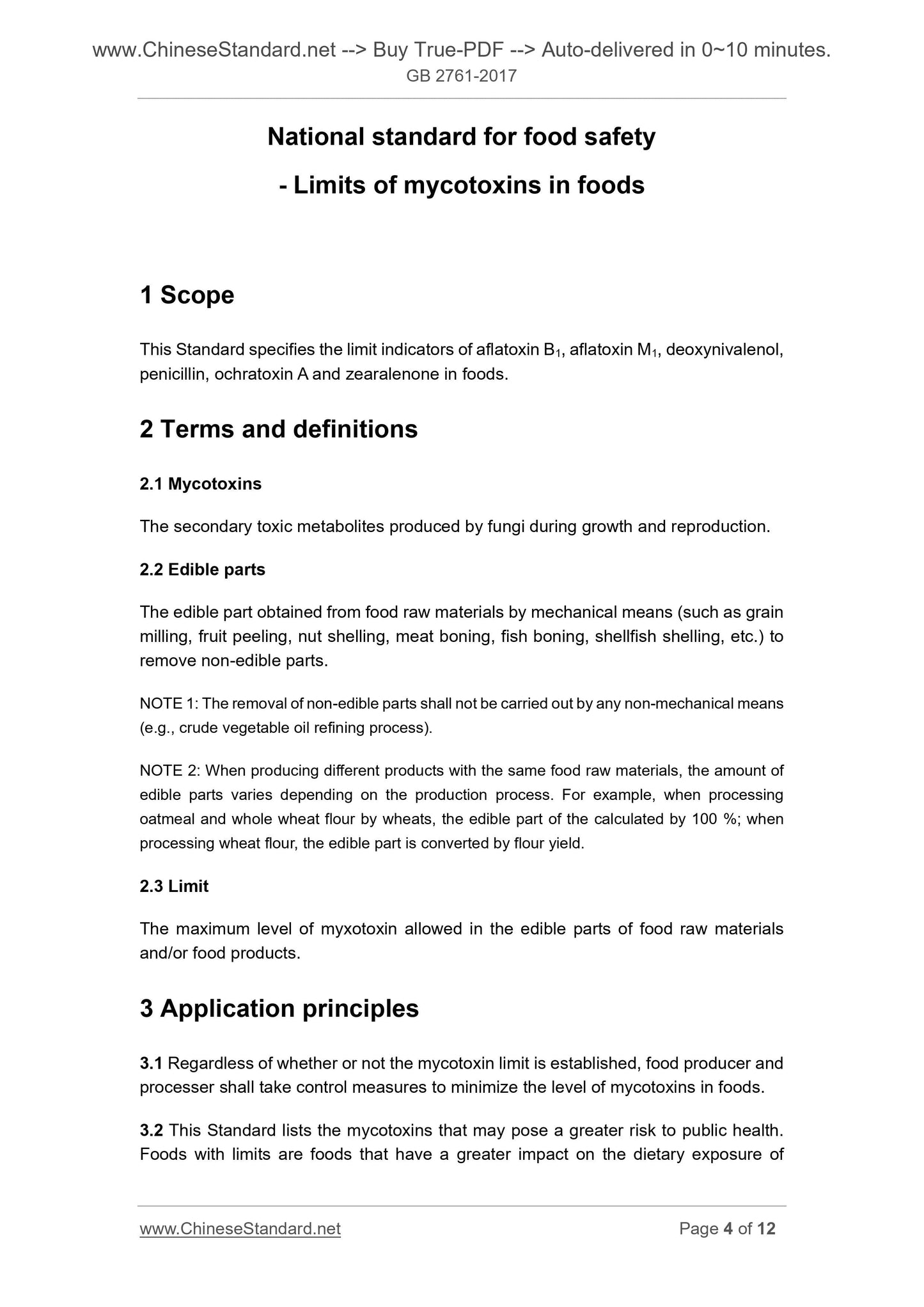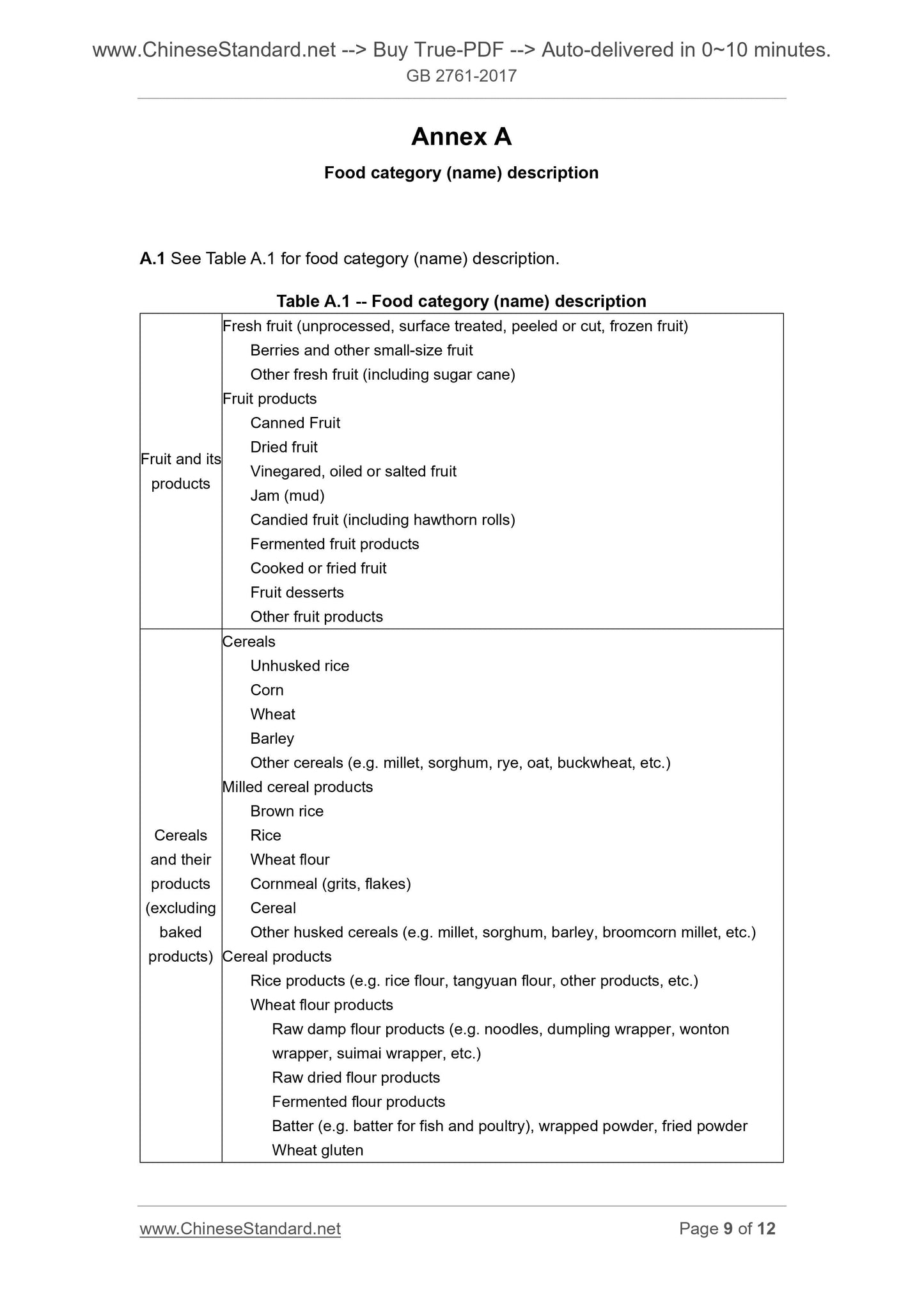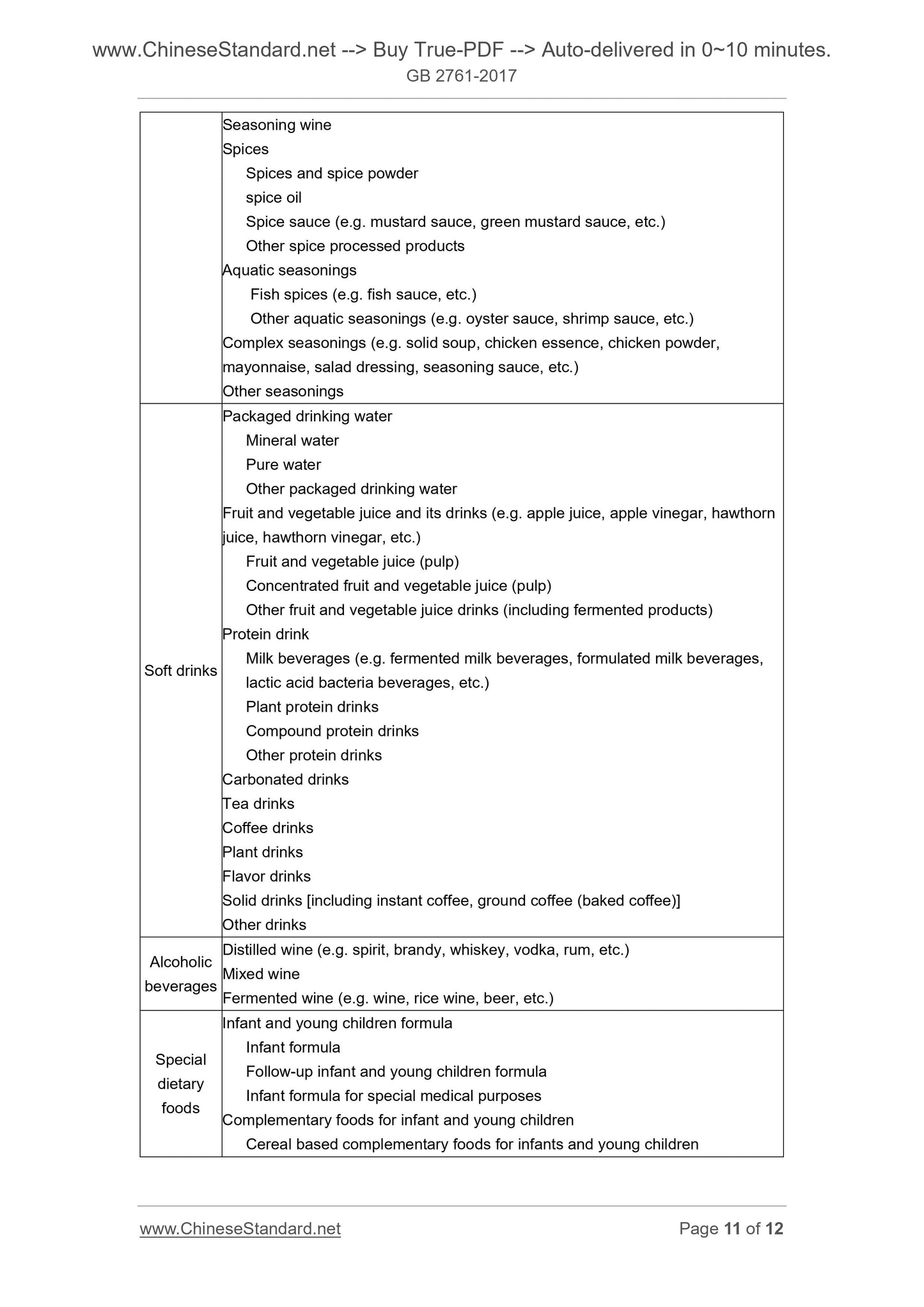1
/
of
6
www.ChineseStandard.us -- Field Test Asia Pte. Ltd.
GB 2761-2017 English PDF
GB 2761-2017 English PDF
Regular price
$70.00
Regular price
Sale price
$70.00
Unit price
/
per
Shipping calculated at checkout.
Couldn't load pickup availability
GB 2761-2017: National standard for food safety - Limits of mycotoxins in foods
Delivery: 9 seconds. Download (and Email) true-PDF + Invoice.Get Quotation: Click GB 2761-2017 (Self-service in 1-minute)
Newer / historical versions: GB 2761-2017
Preview True-PDF
Scope
This Standard specifies the limit indicators of aflatoxin B1, aflatoxin M1, deoxynivalenol,penicillin, ochratoxin A and zearalenone in foods.
Basic Data
| Standard ID | GB 2761-2017 (GB2761-2017) |
| Description (Translated English) | National standard for food safety - Limits of mycotoxins in foods |
| Sector / Industry | National Standard |
| Classification of Chinese Standard | C53 |
| Word Count Estimation | 11,180 |
| Date of Issue | 2017-03-17 |
| Date of Implementation | 2017-09-17 |
| Older Standard (superseded by this standard) | GB 2761-2011 |
| Regulation (derived from) | National Health and Family Planning Commission Notice No. 4 of 2017 |
| Issuing agency(ies) | National Health and Family Planning Commission of the People's Republic of China, State Food and Drug Administration |
Share
